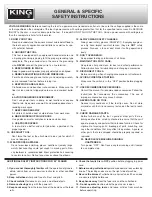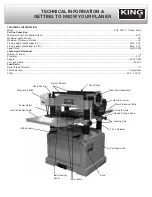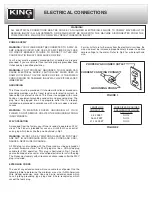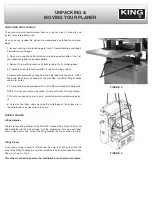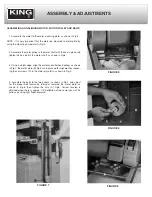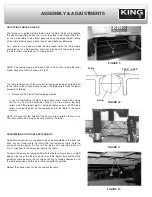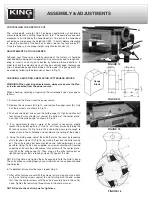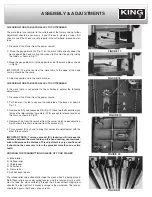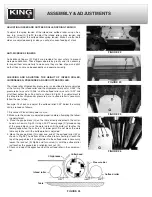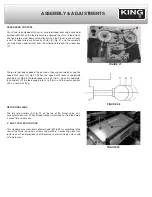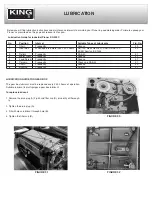
ASSEMbLY & ADJUSTMENTS
ADJUSTING INFEED AND OUTFEED ROLLER SPRING TENSION
To adjust the spring tension of the infeed and outfeed roller, using a hex.
key, turn screw (A) Fig.22 to adjust the infeed roller spring tension and
screw (B) to adjust the outfeed roller spring tension. Make sure that both
sides are adjusted evenly or else you will get uneven feeding of stock.
ANTI-KICKbACK FINGERS
Anti-kickback fingers (F) Fig.23 are provided for your safety to prevent
workpiece kickbacks. These fingers operate by gravity and it is necessary
to inspect them occasionally to make sure they are free of gum and pitch
so that they can move independently and operate correctly.
CHECKING AND ADJUSTING THE HEIGHT OF INFEED ROLLER,
CHIPbREAKER, PRESSURE bAR AND OUTFEED ROLLER
The infeed roller, chipbreaker, pressure bar and outfeed roller are adjusted
at the factory. The infeed roller and the chipbreaker were set at 0.004”, the
pressure bar was set at 0.008” and the outfeed roller was set at 0.02” and
all of them below the cutting circle as shown in Fig.24. If an adjustment to
the infeed roller, chipbreaker, pressure bar or outfeed roller is necessary,
follow the next steps;
Example: To check and adjust the outfeed roller 0.02” below the cutting
circle, proceed as follows;
1. Disconnect Planer from power source.
2. Make sure the knives are adjusted properly before attempting the follow-
ing adjustment.
3. Place the gauge block (G) on the table directly underneath the cutter-
head, as shown in Fig.25. Using a 0.02” Feeler gauge (D) placed on top
of the gauge block, raise the work table until the knife just touches the
feeler gauge when the knife is at its lower point. Do not move the work
table any further until the outfeed roller is adjusted.
4. Move the gauge block (G) under one end of the outfeed roller (B) as
shown in Fig.26. The bottom of the outfeed roller should just touch the
top of the gauge block. If an adjustment to the outfeed roller is necessary,
loosen the lock nut (K) Fig.26 and turn screw (L) until the outfeed roller
just touches the gauge block. retighten lock nut (K).
5. Check and adjust the opposite end of the outfeed roller in the same man-
ner.
FIGURE 22
FIGURE 23
FIGURE 25
FIGURE 26
FIGURE 24
Pressure bar
Chipbreaker
Infeed roller
Table
Outfeed roller
Cutterhead



